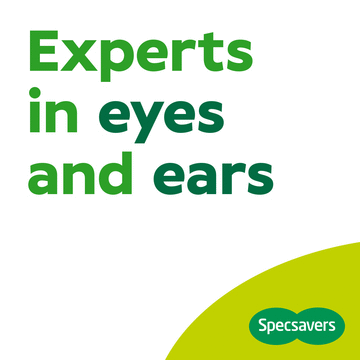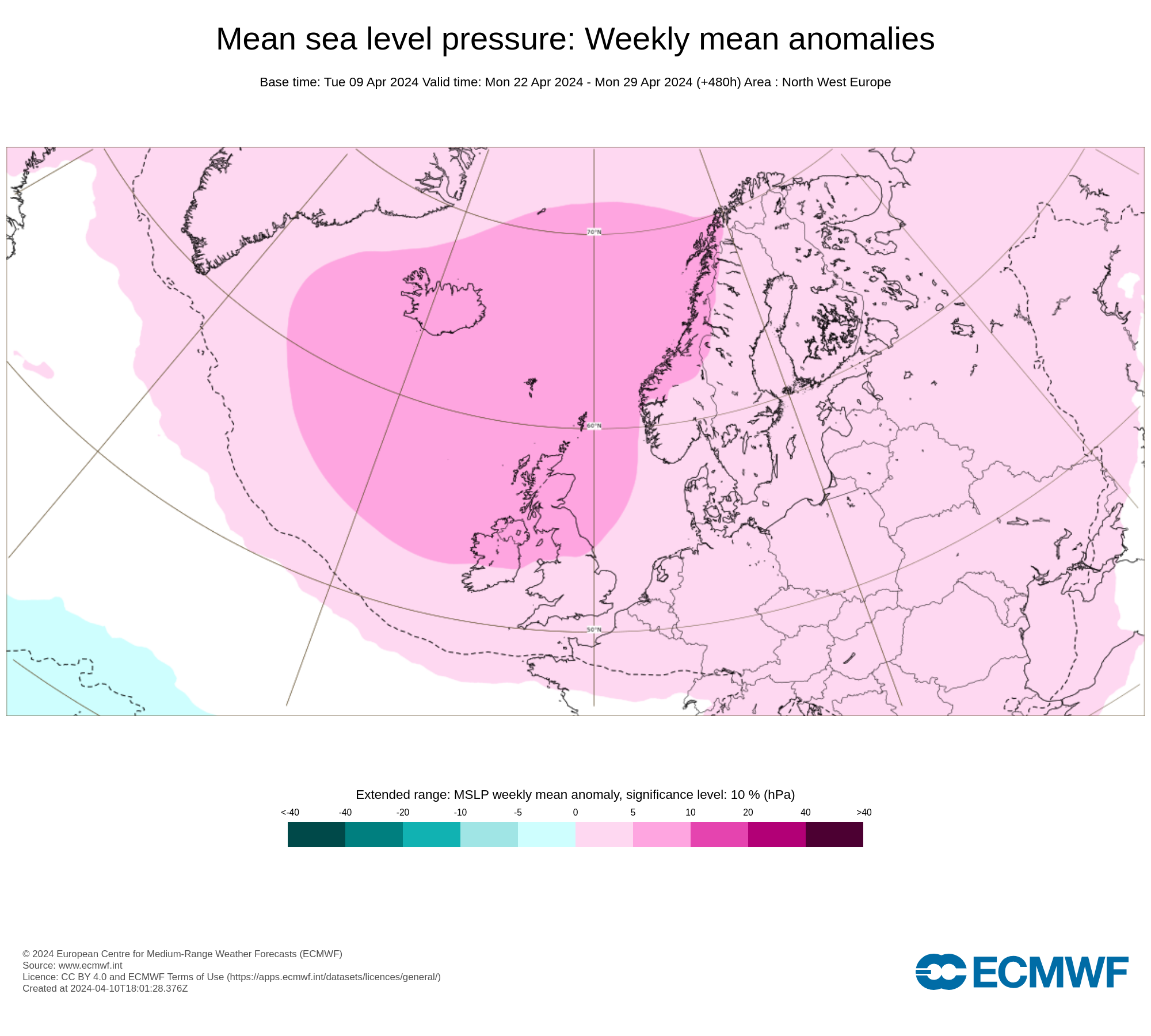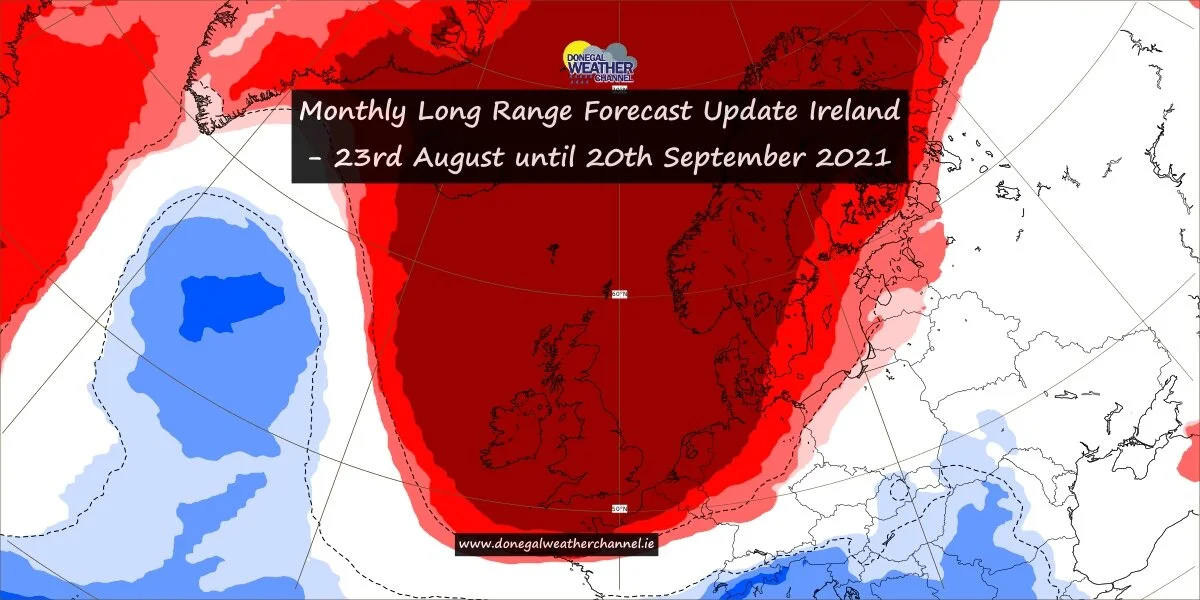Weather forecast outlook and tips for Thursday mornings partial solar eclipse
Space & Science News
A solar eclipse is coming to Europe for the first time since 2015.
It will be a partial solar eclipse, with only some of the Sun blocked by the Moon, though exactly how much will depend on your location.
The good news is that the partial solar eclipse will also be visible in Ireland with the west and north of Ireland the best places for viewing which will see more of the sun covered by the moon. Find times below for a town our city near you.
Weather forecast outlook for Ireland Thursday morning
The forecast for Thursday morning has a lot of cloud across Ireland but some of the high resolution modals do have some breaks in the cloud on Thursday morning across Ireland so that is a little bit of encouraging news. Thursday mornings eclipse starts at 10:01am and will peak at 11:10am this is when the moon will cover the most part of the sun and darkling the solar disc. The Eclipse ends at 12:24pm. Note times will vary across Ireland from 30 seconds to 1 minute depending on our location. This time is based on Letterkenny.
Tomorrow morning will be a mater watching for breaks in the cloud to catch a glimpse but you should not look directly at the sun as it can cause eye damage. I will explain below how to view the eclipse.
CHOOSE A VIEWING TIME NEAR YOU
LETTERKENNY
The animation shows what the eclipse approximately looks like in Letterkenny. Stages and times of the eclipse are outlined below. All times are local time (IST) for Letterkenny.
DUBLIN
The animation shows what the eclipse approximately looks like in Baile Átha Cliath. Stages and times of the eclipse are outlined below. All times are local time (IST) for Baile Átha Cliath.
CORK
GALWAY
BELFAST
ATHLONE
WEXFORD
TIPS ON VIEWING THE ECLIPSE
Do NOT use these techniques
Whatever you do, never look at the sun directly without a safe filter in place to protect your eyes. Besides your unprotected eyeballs, here are some other things you should not use. Do NOT use sunglasses, polaroid filters, smoked glass, exposed color film, X-ray film, or photographic neutral density filters.
techniques TO use
Turn away from the sun and use your hands. Cross the outstretched, slightly open fingers of one hand over the outstretched, slightly open fingers of the other. Then, with your back to the sun, look at your hands’ shadow on the ground. The little spaces between your fingers will project a grid of small images on the ground. During the partial phases of the solar eclipse, these images will reveal the sun's crescent shape.
Let nature be your viewer. If your observing site has trees, look at the shadows of leaves on the ground. During the partial solar eclipse, the tiny spaces between the leaves will act as pinhole projectors, dappling the ground with images of the crescent sun.
Get crafty and make a pinhole projector. You can do this! Just punch a hole into an index card and project the sun’s image onto another card, the wall, or the ground. Note: this is called a pinhole projector for a reason. Don’t hold it up to the sun as if it were a viewer.
The use of a simple pinhole camera enables you to indirectly and safely view a solar eclipse. Photo credit: Eugene Kim
Local viewing at an astronomy club, park or nature center. We highly recommend this route for any kind of eclipse, any daytime solar viewing, or any nighttime astronomical event. If you watch among other amateur astronomers and casual sky gazers, you’ll have fun, learn about astronomy and get a great view of the objects and events going on in the sky.
Commercial solar eclipse glasses. You might find these online or at a local nature center, or museum. Solar eclipse glasses are super easy to use, and they’re sort of cool-looking.
Welder’s glass, #14 or darker. Be sure it is #14 or darker. The great thing about welder’s glass is that it allows you to view the sun directly. Plus welder’s glass is a bit more durable than commercial eclipse glasses. If you’re like me, between solar eclipses you’ll forget where you put your commercial eclipse glasses. With the welder’s glass, you can always add it to your rock collection. Search for a local “welding supply” company.
Viewing the May 20, 2012, solar eclipse through welder's glass
I myself will be viewing the eclipse using a telescope and a DSLR Camera but I will have special solar filters on both to make it safe for myself. Below you can see some of my own equipment.
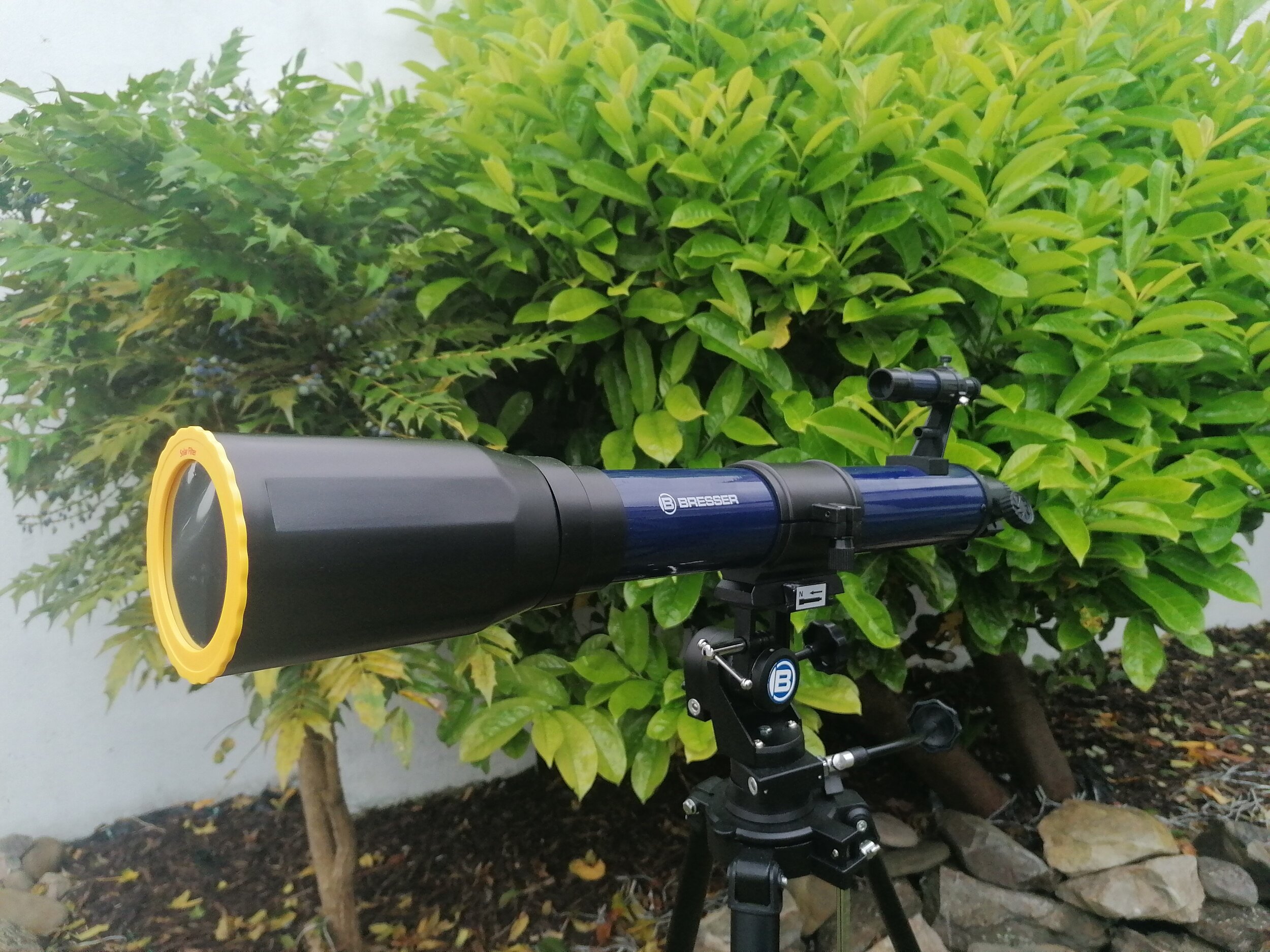
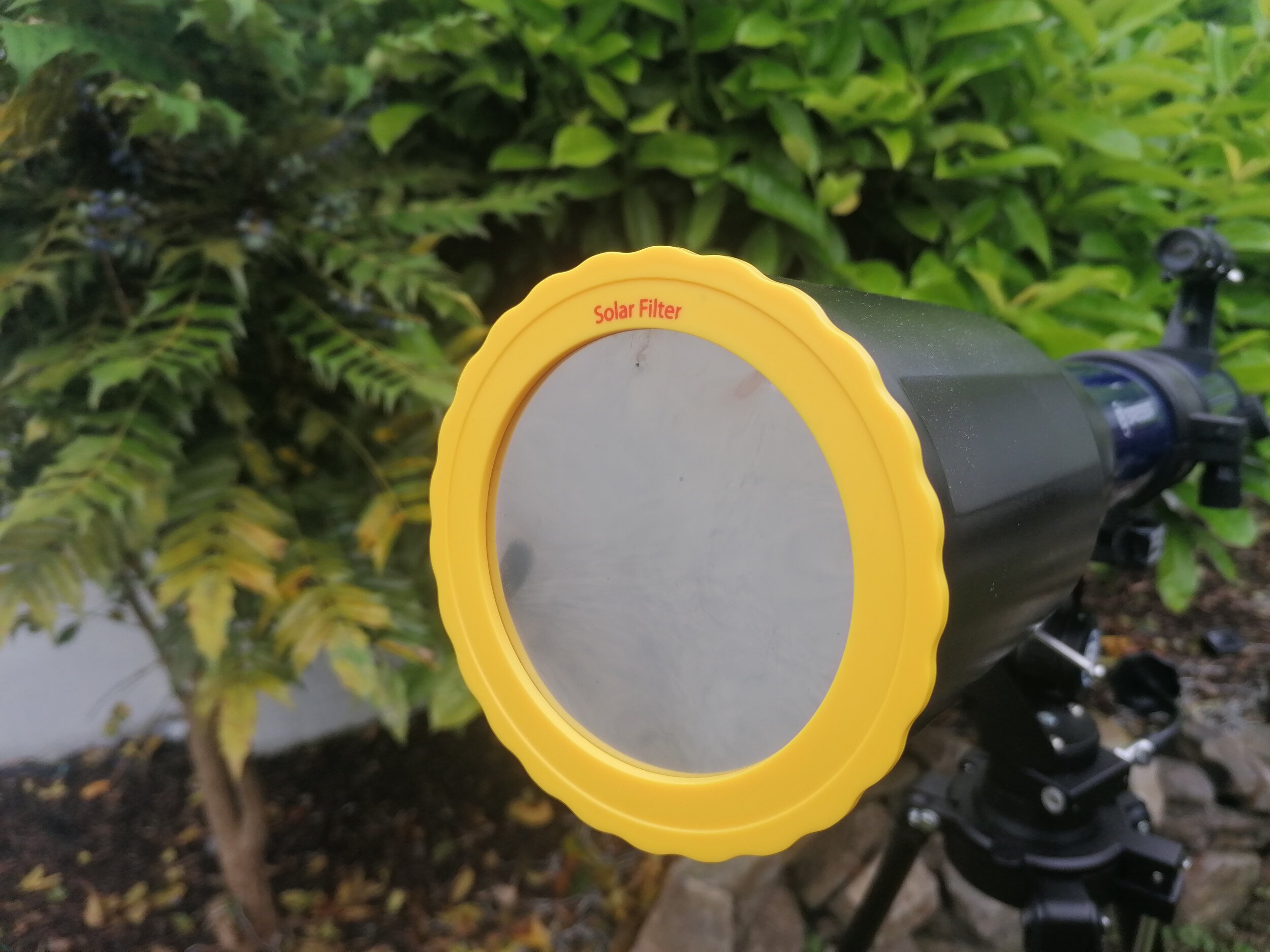
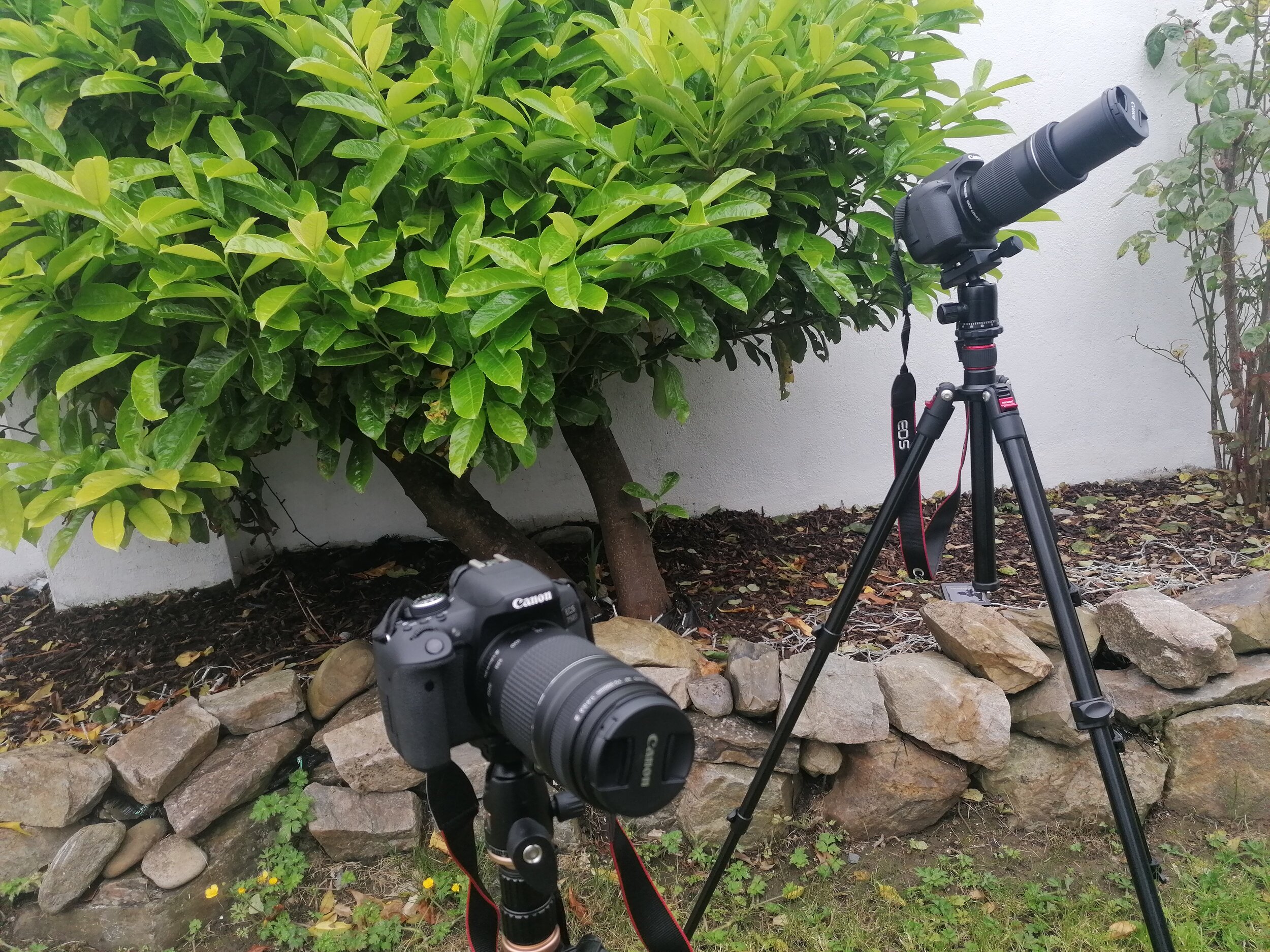
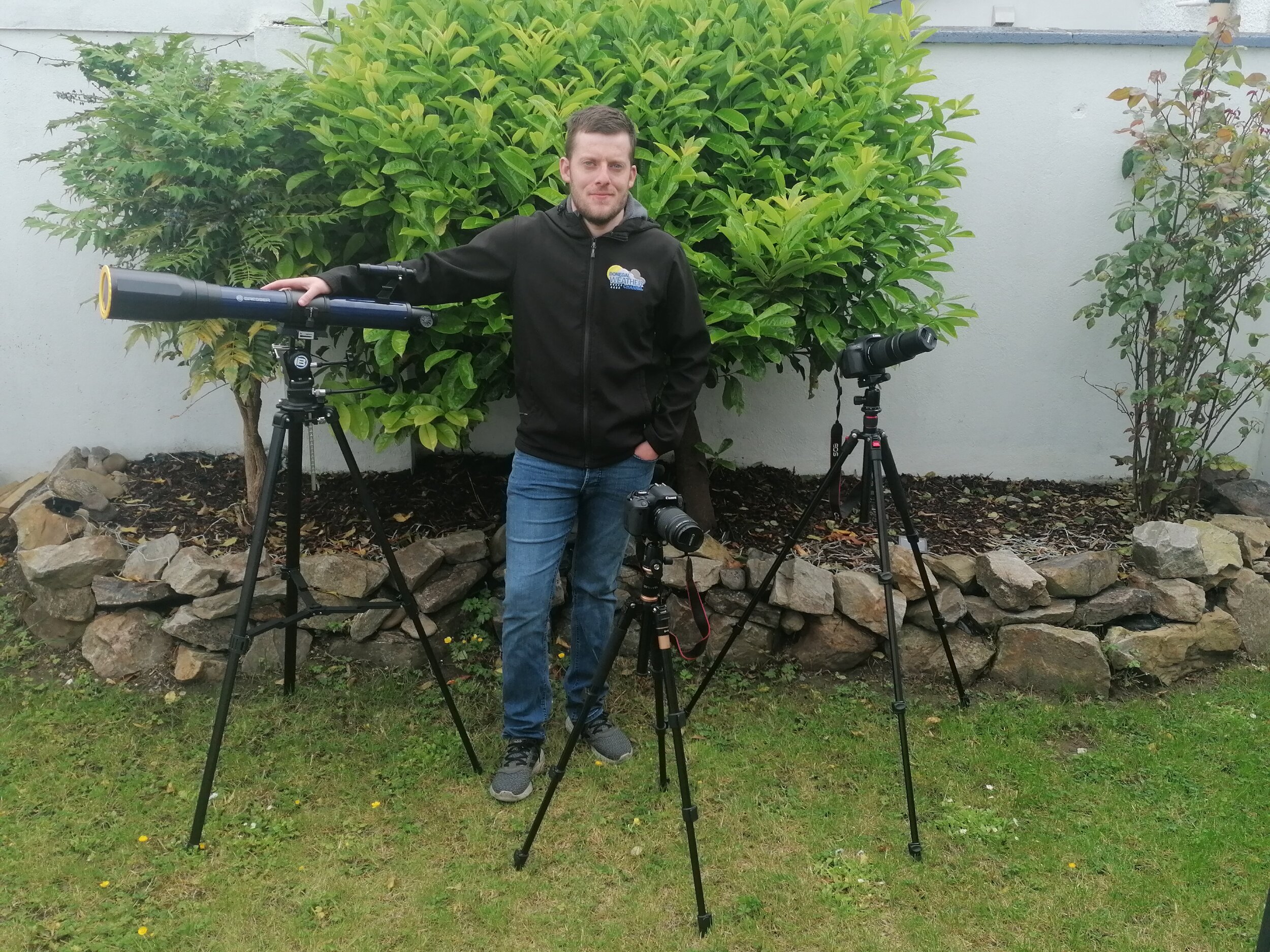

Telescopes, binoculars, and cameras need solar filters for two reasons: to protect them from intense sunlight and to ensure that you don't accidentally look at the Sun through an unfiltered instrument. In every case, the solar filter must be attached to the front of your telescope, binoculars, or camera lens.


